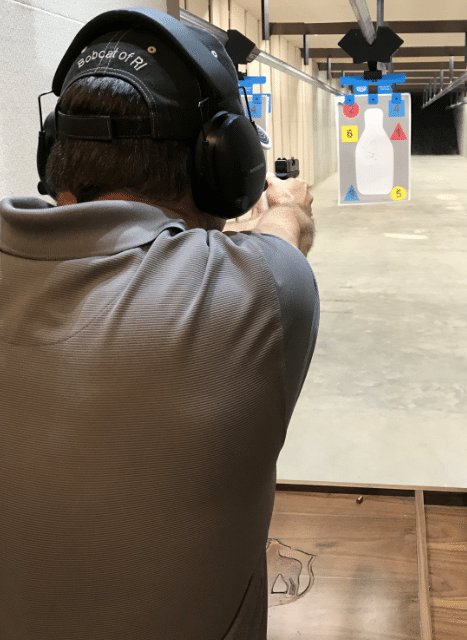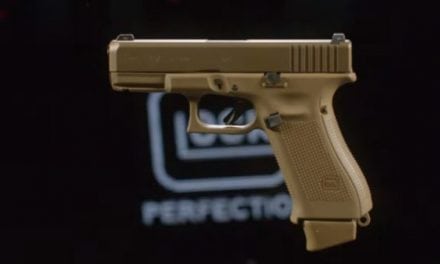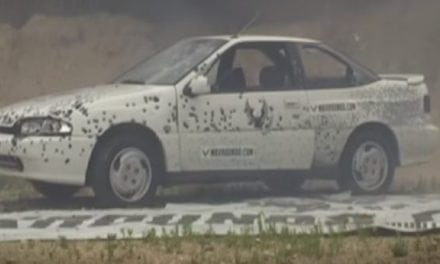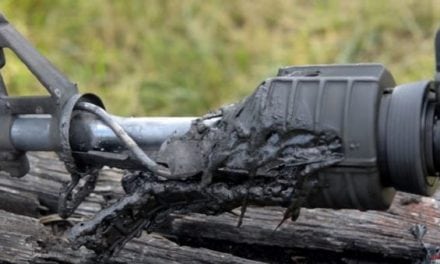by Robert Cardente
Special to Outdoor Enthusiast Lifestyle Magazine
… What do you do? If you are working on defensive handgun shooting skills designed to stop a threat, knowing what to do after the shots are fired is just as important as learning when and how to squeeze the trigger. As a firearms instructor and law enforcement trainer, I am constantly emphasizing the importance of training under realistic conditions. That concept should always be applied to every defensive shooting drill you are doing.
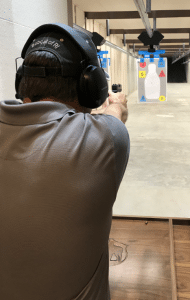 If you are working on defensive shooting skills, take a minute and think… what do you do after the shots are fired? Do you drop your gun to a low ready position and look to see where you hit? Do you scan for additional threats and holster as quickly as possible? Do you reacquire the front sight, rear sight, and prepare yourself to fire additional shots if necessary to stop the threat you just shot at?
If you are working on defensive shooting skills, take a minute and think… what do you do after the shots are fired? Do you drop your gun to a low ready position and look to see where you hit? Do you scan for additional threats and holster as quickly as possible? Do you reacquire the front sight, rear sight, and prepare yourself to fire additional shots if necessary to stop the threat you just shot at?
If you said “yes” to question three, you are on the right track. If you didn’t, it’s time to build new habits to become a more effective defensive shooter.
Before I tell you what you should be doing, let me explain the why behind it. It all starts with mindset. The importance of visualization in training cannot be overstated, so let’s dissect the mindset of an effective and dedicated defensive shooter.
 Whether you’re a law enforcement officer attending mandatory firearms training or a law abiding citizen going to your local shooting range, a focused defensive shooter doesn’t see a paper target in front of them. Rather, they see a threat! That visualization helps build a sense of urgency and importance in getting your shots off as quickly and accurately as possible.
Whether you’re a law enforcement officer attending mandatory firearms training or a law abiding citizen going to your local shooting range, a focused defensive shooter doesn’t see a paper target in front of them. Rather, they see a threat! That visualization helps build a sense of urgency and importance in getting your shots off as quickly and accurately as possible.
Whatever shooting drill or round count you plan on firing, developing a set of sound behaviors after squeezing the trigger will increase your chances of stopping the threat you are shooting at. For that very reason, reacquiring your front and rear sight after firing your shots is crucial.
Again, using the concept of visualization, how many shots does it take to stop a threat? One, three, seven? There is no clear-cut answer because of all the variables involved, and that is why I emphasize the importance of reacquiring your front and rear sight after you finish your firing sequence.
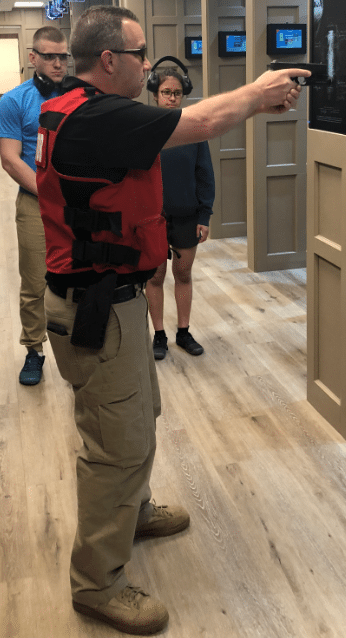
What if you didn’t hit the threat when you fired? What if you hit the threat every time you squeezed the trigger but the threat is still advancing on you? If you are training yourself to reacquire the sights after you are done firing, you are already prepared to fire again if needed. Those precious milliseconds may mean the difference between a successful outcome for you, or a successful outcome for the bad guy!
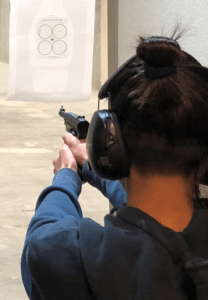
Once you have determined you hit the threat you fired at and your rounds had the desired effect, only then is it time to scan for additional threats. After you are confident there are no additional threats, you should perform a tactical reload if possible, (stay tuned for future articles) or holster your firearm.
Here’s your homework: Next time you are at your local gun range, watch to see howmany shooters reacquire their sights after firing their rounds. Or if you are a law enforcement officer, watch how quickly some officers fire their rounds, do a quick (just going through the motions) scan, and quickly holster. Only by recognizing these poor habits can we change our own behaviors and improve our training to give us the best chance to save a life – especially our own!

